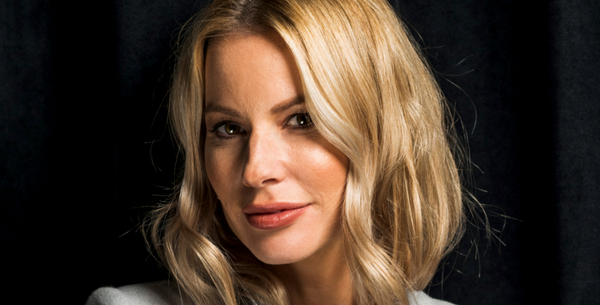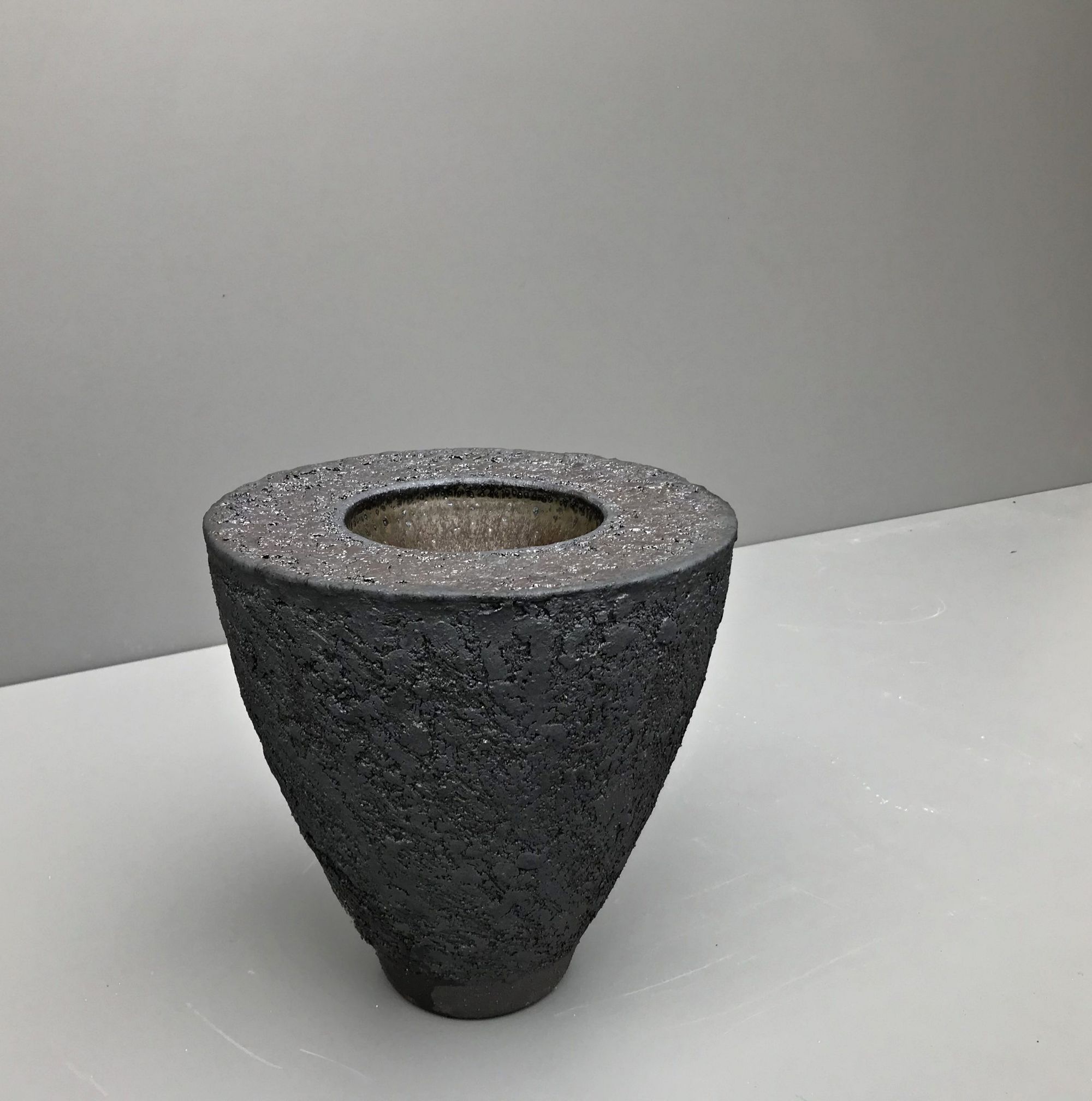After four years, Enikő Kontor has once again opened a solo exhibition. The most of us know the ceramic artist for her unique, characteristic, rustically frisky and loveable small vases, mugs, jugs and pots from the shelves of design stores in Budapest. However, Enikő Kontor also has another side: an autonomous, visual arts side, manifesting in the unique ceramic statuettes and images drawing on dichotomies that are so characteristic of her. The exhibition titled 9D opened in the International Ceramics Studio in Kecskemét allows the audience to meet this side of the artist.
Written by Piroska Novák
The co-existence and simultaneity of applied (having a practical function) and autonomous (fulfilling an aesthetic-artistic function) objects have been a natural and self-evident phenomenon in the history of ceramic arts. To use a trivial example, it’s enough to think of the material culture of ancient civilizations, where ceramics are present both in the basic toolset of everyday life – raw clay vessels or pots fired on low heat – and in the form of the religious hand-molded clay idols. This duality is less apparent in today’s ceramics culture: on the one hand because the lines between fields have long been blurred, for which the genre of studio ceramics is a very good example,[1] but vases and bowls can also be mentioned as object types in which the practical function is regularly overridden by the aesthetic. On the other hand, the number of creators who can create and represent their activity on both fields in the same quality and with the same authenticity lessens by the day. Enikő Kontor is one of the very few exceptions, even if her works made with a visual arts intention have far less recognition and opportunity.

Enikő Kontor graduated from the Ceramics Department of Moholy-Nagy University of Art and Design in 2010. At the time, graduates had to prepare two diploma projects – typically an applied and an autonomous one – along the duality of ceramics culture outlined above. In her diploma projects – a serving set and a series of statuettes–, Enikő merged the two tasks: her objects used the same simple, geometric forms and form impressions, and she expressed the different functions with shifts in dimension (between two-dimensional and three-dimensional), as well as different use of materials (porcelain-stoneware and concrete). In their titles – Medi-tál and Paramnézia series –, the clever, ironic playfulness also showing in her later works, sometimes surprising and other times confusing the viewer, could already be observed.
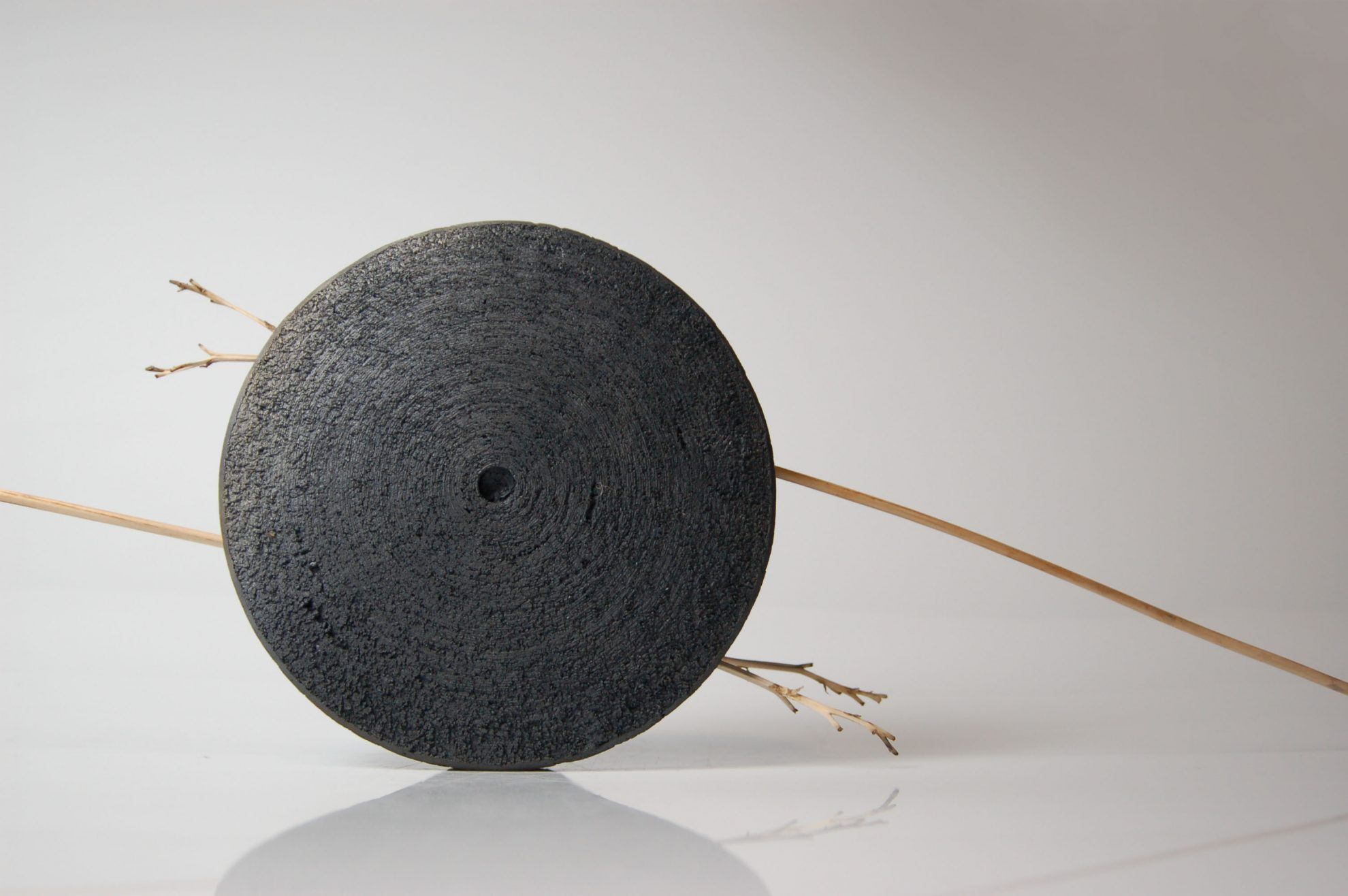
In 2016, at her exhibition Esetleg rét held in Museion No. 1 Gallery, Kontor showcased heavy statues and vase statuettes evocative of monolith blocks, the obscure, black masses of which were softened by velvety patches resulting from the oil raku technique and the plant elements placed in them. She created her relief series Kulisszák in 2017, in which she preserved the precise, geometric form-shaping using sheets, as well as the oil raku technique resulting in dramatic black tones. The innovation of this series lies in the frontality and reflective symmetry forced on the viewer, with immersion in the details of objects, concentration and meditation as the core message.
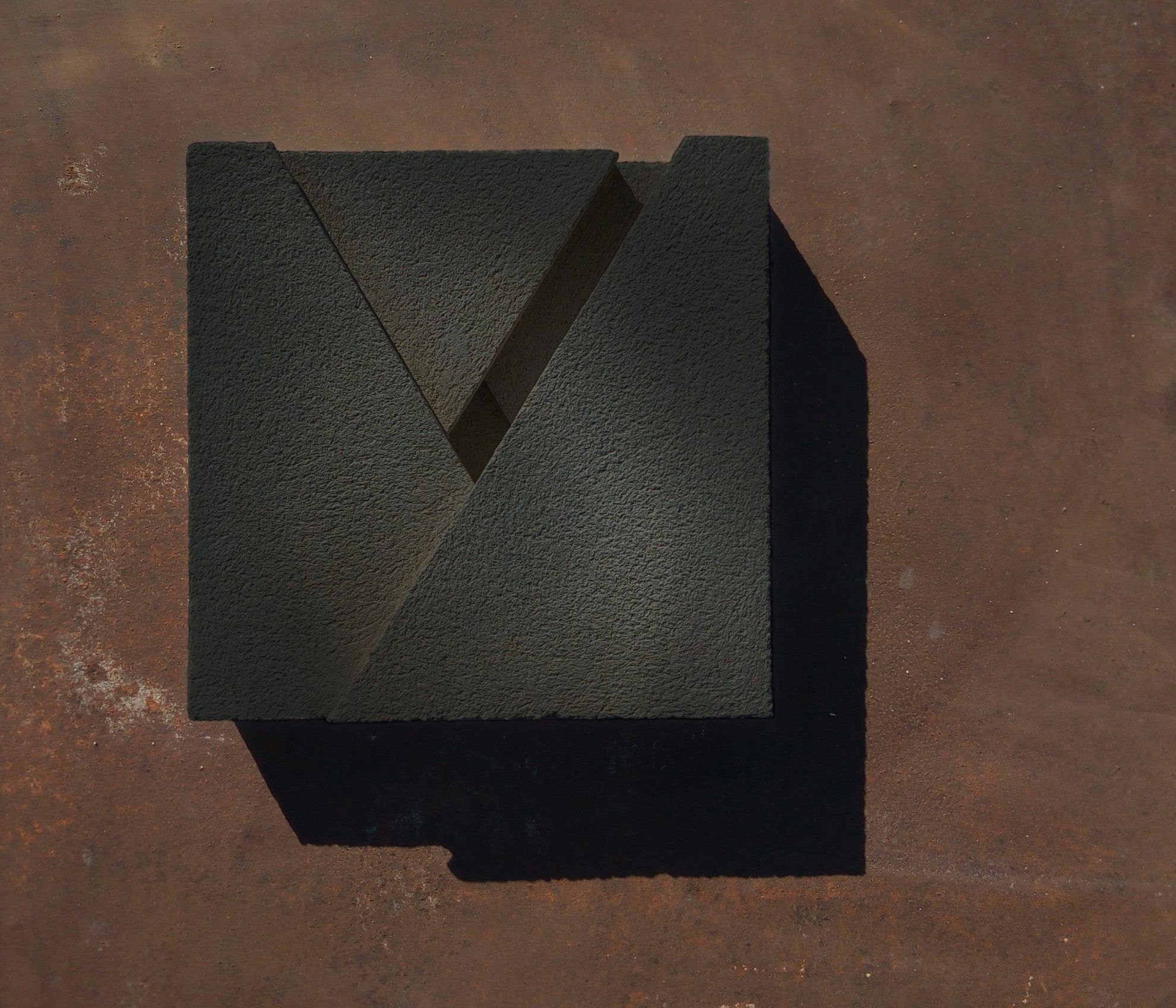
She carried these ideas forward in her untitled statuette series started in 2018, evoking air filtration equipment, with which she seemed to have returned to spatial forms, softening their walls and masses with regular, grid-like breaks, at the same time keeping their frontality. Owing to this gesture, these statues evoke the religious objects of ancient cultures, worshipped on high stone altars. Through the openings on the bodies of the rectangle, prism and triangle shapes carrying numerous and deep layers of meaning, infiltrated by air or other times hiding another internal form, as if a superior, out of the world entity was speaking to its believers.

The shifts between spatial and planar, the strict, block-like, even monumental shapes and the beauty of the sensitive, lyrical details overriding the former, the co-existence of the raw chamotte clay with black oil raku and the delicately bright glazes – Enikő Kontor’s autonomous works are perhaps characterized best by the interplay of opposites. Their seriousness, accuracy, size exceeding that of small statuettes, pure simplicity and, most of all, thought-provoking message are difficult to reconcile with the shallow image formed of the creator, outlining a tall, lean woman dressing in colorful clothes or rather costumes, laughing loudly without care, singing and dancing around with a childish delight, calling her friends “sweetheart”, with a profound, melancholic gaze. Of whom we would never suspect such depth at first glance.
Humans are controversial beings, creative humans even more. Not many know Enikő Kontor’s serious and contemplative side, only a narrow scope of people get to discuss object culture, ceramics, her writings, the profession and its representatives with her. Perhaps this is why her autonomous work is more hidden from the public eye, because these objects are more detached, silent, don’t tell much about themselves, they remain quiet. They don’t address the audience with such informality as her household objects boasting natural, warm earthy tones and fitting right into our hands.
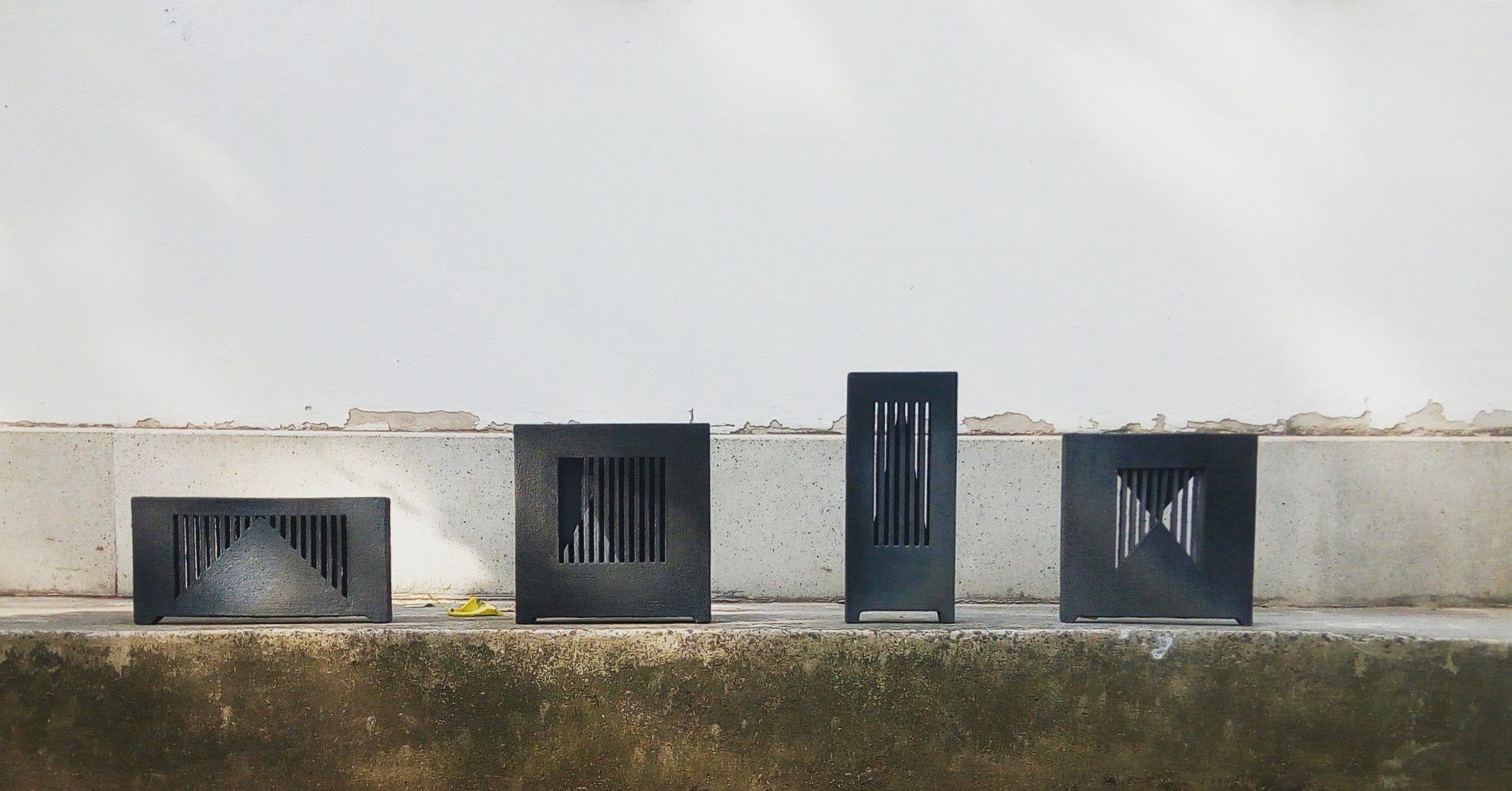
This is the conflict Enikő wished to change at the Summer Symposium of the International Ceramics Studio, where she reinvented and inaugurated her already known double-walled vases and bowls as autonomous works. She applied the creative method of increasing ratios and expanding shapes, which is a seemingly simple, yet very effective and spectacular tool. She once again softened large masses with the meticulous working of surfaces evocative of stone textures, and her ceramic works were completed by the traditional high temperature wood-fired kiln and its diverse, unrepeatable fire effects.
Celebrating the 40th anniversary of its foundation in 2017, the International Ceramics Studio operating in Kecskemét, Hungary, is a hub of contemporary Hungarian ceramics culture. With its top-quality collection, the institution is outstanding also on a European-level. Enikő Kontor has been working in the studios in Kecskemét since early 2019, in seclusion and silence, like a nun in the consecrated convent of ceramics. Her contemplative, self-reflective and solitary creative work was further deepened by the Covid-19 pandemic and its impacts – the objects showcased at her exhibition 9D pay homage to this period.
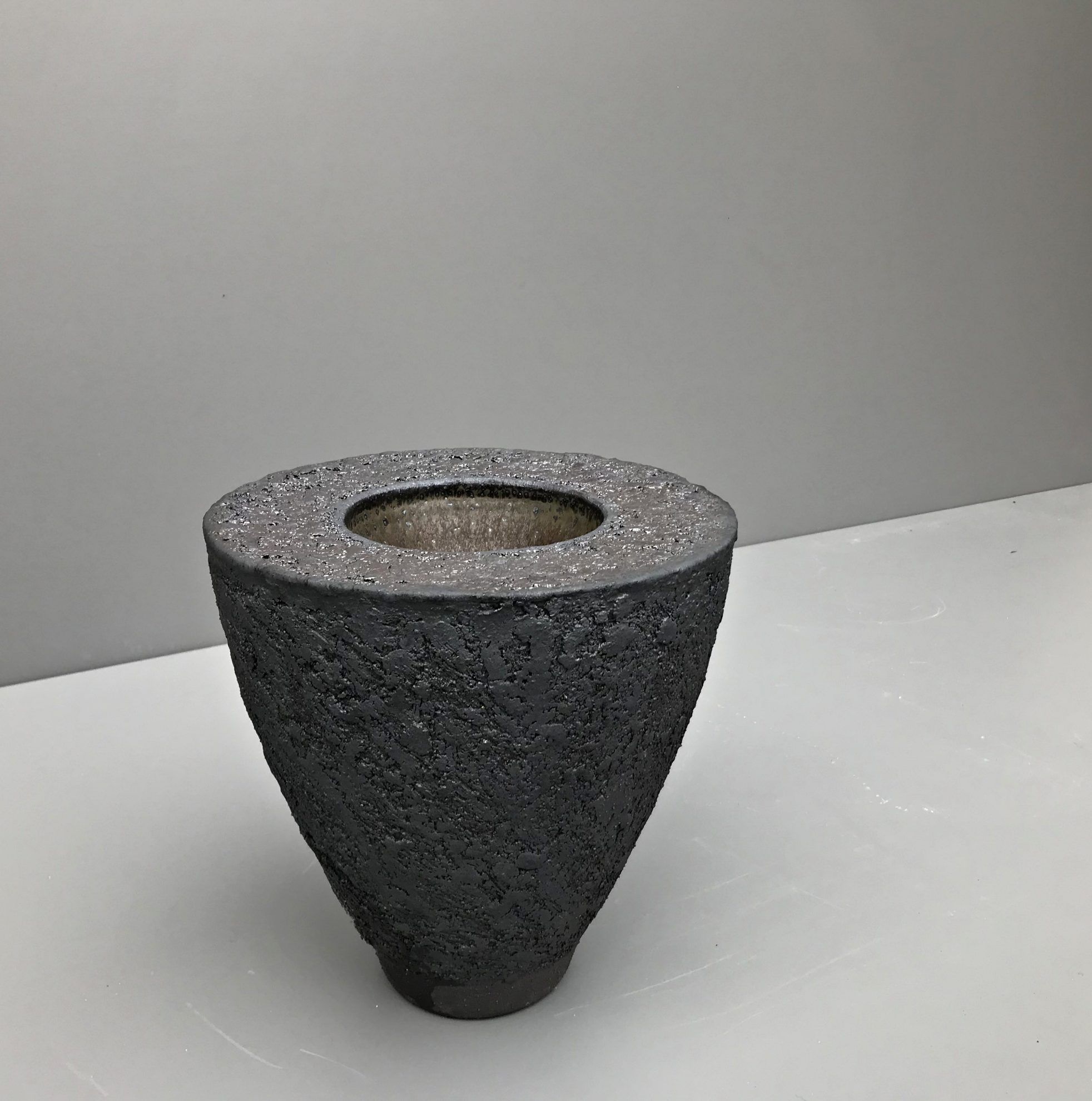
We see the backside of her rectangular ceramic images hanged on the walls, as if we were looking at frames or empty icons. Enikő dedicated a lot of time and effort to working on the surface of the frames and images carefully and thoughtfully, sometimes reminding the viewer of the gravel beds of Zen gardens raked into harmonic arches or the gilded details and cracks of medieval triptychs.
The images built of sheets and the windows opening to different worlds merge dimensions here once again, and demand space for themselves by emerging out of the flatness of the walls. The title – 9D – alludes to this phenomenon partly, and is a sarcastic flick to the vanity of marrying 3D printers and ceramics culture at the same time. No machine is capable of making such “breathing” objects with a soul and a strong aura.
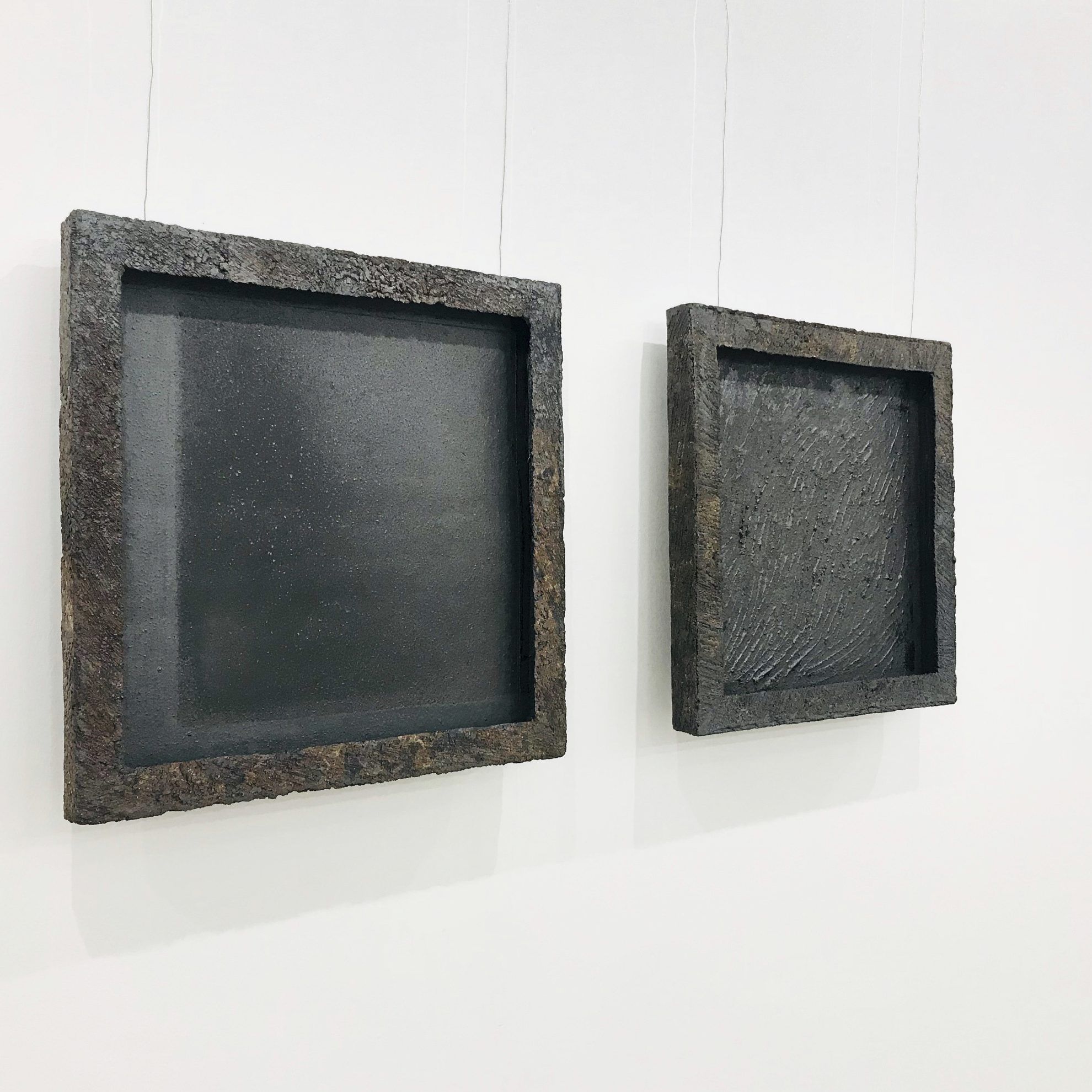
Icons, sacred objects, ceremonial vessels with a blunt light in their hollows in the spaces of Kápolna Gallery. Going near them, immersing in their details, in the precise edges, the pointy corners, the layered, colorful textures, the diverse and powerful traces of fire. To think, to focus, to watch, to meditate, to look into ourselves. These objects place many different tasks on us as recipients, and carry a multitude of messages. According to their creator, everyone believes in something at least at one point in their lives: in a religion, a higher being, salvation, the Universe, Fate, Karma, science, human goodness or themselves. I believe in good and authentic objects.
Enikő Kontor | Facebook | Instagram
[1] Studio ceramics is related to the symposium and studio movement, which has called to life unique object creation based on experiments with materials and techniques as opposed to industrial production in Hungary from the early 1960s. The studio movement was most prevailing in the fields of ceramics, glasswork and textile arts. In the case of Enikő Kontor, preserving the duality characteristic of the craftsmanship by default, studio ceramics means the creation of unique and limited series high-quality objects both in the autonomous and applied genre, made amongst manufactural circumstances.

Bubble above the city | Villa Sophia, Prague
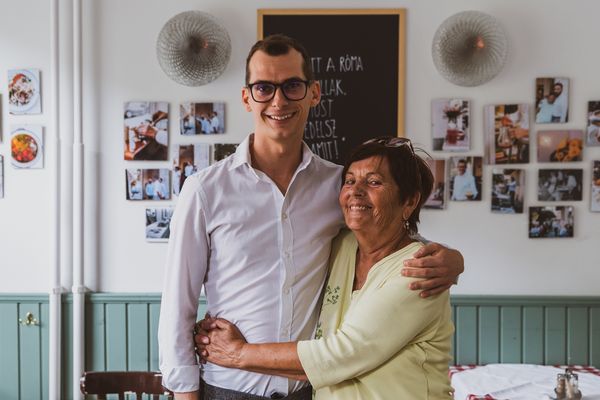
Good people, good places | Big picture of gastronomy
